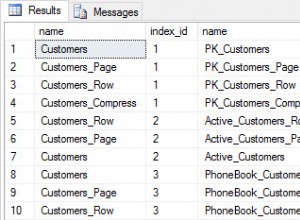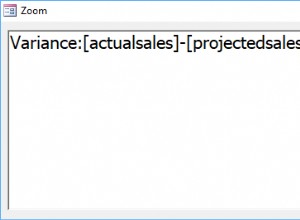Sie können die Katalogtabelle pg_attribute
um eine Liste von Spalten zu erhalten, die nicht NOT NULL definiert sind und daher kann Halten Sie NULL Werte:
SELECT quote_ident(attname) AS column_can_be_null
FROM pg_attribute
WHERE attrelid = 'tbl'::regclass -- valid, visible table name
AND attnum >= 1 -- exclude tableoid & friends
AND NOT attisdropped -- exclude dropped columns
AND NOT attnotnull -- exclude columns defined NOT NULL!
ORDER BY attnum;
Wobei tbl ist Ihr (optional schemaqualifizierter) Tabellenname.
Sagt nicht, dass es irgendwelche tatsächlichen NULL-Werte in der Spalte gibt. Sie müssten jede Spalte testen. So:
Volle Automatisierung mit plpgsql-Funktion
CREATE OR REPLACE FUNCTION f_all_null_columns_of_tbl(_tbl regclass)
RETURNS SETOF text AS
$func$
DECLARE
_row_ct bigint; -- count rows in table $1
_sql text; -- SQL string to test for NULL values
_cols text[]; -- array of candidate column names
_nulls bool[]; -- array of test results
BEGIN
EXECUTE 'SELECT count(*) FROM ' || _tbl
INTO _row_ct;
IF _row_ct = 0 THEN
RAISE EXCEPTION 'Table % has no rows!', _tbl; -- pointless for empty table
ELSE
RAISE NOTICE '% rows in table %.', _row_ct, _tbl;
END IF;
SELECT INTO _sql, _cols
'SELECT ARRAY[' || string_agg('bool_and(' || col || ' IS NULL)', ', ')
|| '] FROM ' || _tbl
, array_agg(col)
FROM (
SELECT quote_ident(attname) AS col
FROM pg_attribute
WHERE attrelid = _tbl -- valid, visible table name
AND attnum >= 1 -- exclude tableoid & friends
AND NOT attisdropped -- exclude dropped columns
AND NOT attnotnull -- exclude columns defined NOT NULL!
ORDER BY attnum
) sub;
EXECUTE _sql INTO _nulls;
FOR i IN 1 .. array_upper(_cols, 1)
LOOP
IF _nulls[i] THEN -- column is NULL in all rows
RETURN NEXT _cols[i];
END IF;
END LOOP;
RETURN;
END
$func$ LANGUAGE plpgsql;
Aufruf:
SELECT f_all_null_columns_of_tbl('my_schema.my_table');
Getestet mit Postgres 9.1 und 9.3.
Dies verwendet eine Reihe erweiterter plpgsql-Funktionen.
Zugehörige Antwort zum Erstellen und Ausführen von SQL-Code mit moderner Syntax:
Informationen zum Durchlaufen eines Datensatzes:




